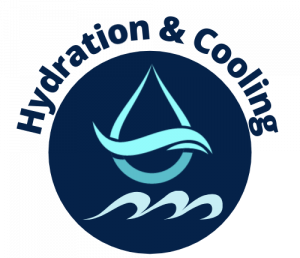Understanding Dehydration Risks for Football Players
Football practices in hot and humid conditions significantly increase players’ risk of dehydration and heat-related illness. During intense training sessions, athletes can lose 2-3 liters of sweat per hour, rapidly depleting the body’s fluid reserves. This fluid loss not only impacts performance but can lead to serious health complications if not properly managed.
The combination of heavy equipment, high-intensity exercise, and environmental heat creates a perfect storm for fluid loss. Football players are particularly vulnerable because the sport involves intermittent bursts of activity, which can mask early signs of dehydration as players focus on execution rather than their hydration status.
Coaches and athletic trainers must recognize that youth athletes face even greater risks. Young players don’t sweat as efficiently, may not recognize thirst cues as readily, and often don’t voluntarily drink enough fluids during practice sessions.
Effective Hydration Strategies Before Practice
Proper hydration begins long before players take the field. Athletes should begin hydrating 24 hours before intense practices in hot weather, with a focus on consistent fluid intake throughout the day preceding practice. This pre-hydration strategy helps ensure adequate fluid levels before exertion begins.
Players should consume 16-20 ounces (470-590 ml) of water or sports drink 2-3 hours before practice, followed by another 8-10 ounces (235-295 ml) 10-20 minutes before activity begins. This approach maximizes hydration levels while allowing sufficient time for excess fluid to be eliminated before practice starts.
Morning weight checks can be valuable tools for monitoring hydration status. Players should aim to begin practice fully hydrated, which can be roughly assessed by clear or light-colored urine. Darker urine indicates the need for additional fluid intake before engaging in strenuous activity.
Maintaining Hydration During Football Practice
During practice in hot conditions, coaches should schedule regular hydration breaks every 15-20 minutes. These breaks should be mandatory, not optional, as many players won’t voluntarily drink enough to offset sweat losses even when fluids are freely available.
Athletes should aim to consume 7-10 ounces (200-295 ml) of fluid during each hydration break. For practices lasting longer than 60 minutes or taking place in extreme heat, sports drinks containing electrolytes and carbohydrates offer advantages over water alone by replacing lost sodium and providing energy.
Individualized hydration plans may be necessary, as sweat rates vary significantly between players. Linemen typically require more fluid than skill position players due to their larger body mass and the intensity of their activities during practice.
Post-Practice Rehydration Protocols
Effective rehydration after practice is crucial for recovery and preparation for subsequent training sessions. Players should weigh themselves before and after practice, aiming to replace 150% of weight lost during the session. This means consuming approximately 24 ounces (710 ml) of fluid for each pound (0.45 kg) lost during practice.
The post-practice recovery window represents a critical opportunity to restore hydration levels. Athletes should consume fluids containing sodium to help retain the water and accelerate the rehydration process. Chocolate milk has gained popularity as a recovery beverage because it provides fluid, electrolytes, carbohydrates, and protein in proportions that support recovery and rehydration.
Players should continue monitoring their hydration status after practice by checking urine color and maintaining regular fluid intake throughout the evening, especially when two-a-day practices are scheduled.
Recognizing Signs of Dehydration
Coaches, athletic trainers, and players must be educated about the warning signs of dehydration. Early symptoms include thirst, fatigue, headache, dry mouth, and decreased performance. More severe indicators include dizziness, confusion, rapid heartbeat, and cessation of sweating.
Teams should implement a buddy system where players watch for dehydration signs in teammates. This peer monitoring system can catch early warning signs that coaches might miss in a large practice setting.
When signs of dehydration are observed, the affected player should immediately move to a cooler environment, remove equipment, and begin controlled rehydration. For moderate to severe cases, medical attention may be necessary, as IV fluids might be required to safely restore hydration levels.
Environmental Considerations and Practice Modifications
Teams should utilize wet-bulb globe temperature (WBGT) readings to assess heat stress conditions and modify practices accordingly. This measure accounts for temperature, humidity, wind speed, and solar radiation to provide a comprehensive assessment of environmental heat stress.
When WBGT readings indicate high risk, coaches should implement appropriate modifications: extending acclimatization periods, reducing practice duration or intensity, increasing frequency of hydration breaks, minimizing equipment worn during practice, and scheduling sessions during cooler parts of the day.
Creating shaded rest areas with cooling fans can significantly reduce heat stress during breaks. Some programs utilize cold water immersion tubs on the sidelines for rapid cooling if players begin to show signs of heat illness.
Building a Team Culture of Proper Hydration
Successful hydration programs require creating a team culture that prioritizes proper fluid intake. Coaches should lead by example, emphasizing hydration as a performance enhancement strategy rather than a sign of weakness.
Educational sessions before the season begins can help players understand the performance benefits of staying hydrated and the risks associated with dehydration. These sessions should include practical guidance on individual hydration needs and monitoring strategies.
Teams should make hydration equipment readily accessible, including personalized water bottles, hydration stations at practice facilities, and convenient fluid access during all team activities. When proper hydration becomes part of the team’s standard operating procedure, compliance and effectiveness improve dramatically.
Conclusion
Preventing dehydration during football practice requires a comprehensive approach that begins before players take the field and continues throughout the recovery period. By implementing structured hydration protocols, monitoring players closely, and modifying practices based on environmental conditions, teams can significantly reduce dehydration risk while maximizing performance and safety.
The most successful programs view hydration as a fundamental aspect of athletic preparation rather than an afterthought. When coaches, athletic trainers, and players all commit to proper hydration practices, the team benefits from improved performance, enhanced recovery, and most importantly, a safer training environment during the challenging conditions of summer football practice.
